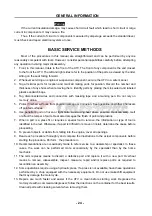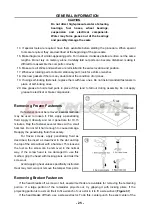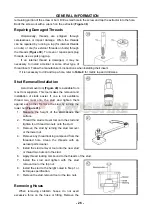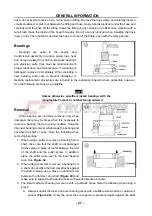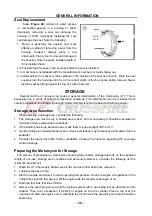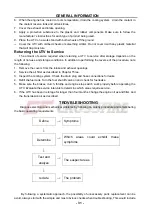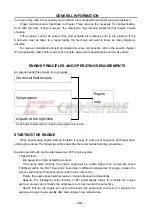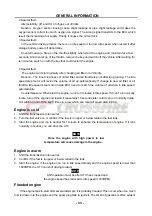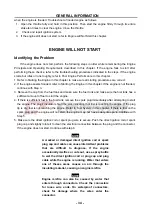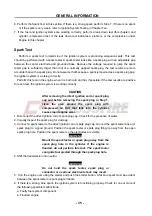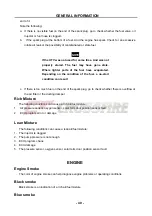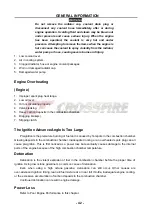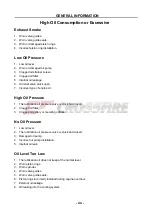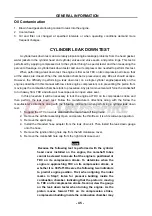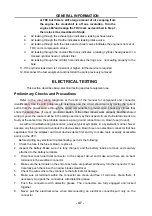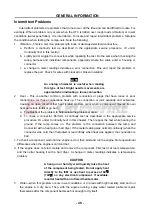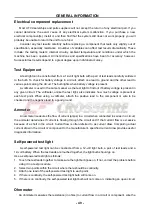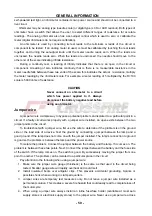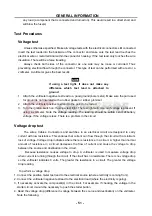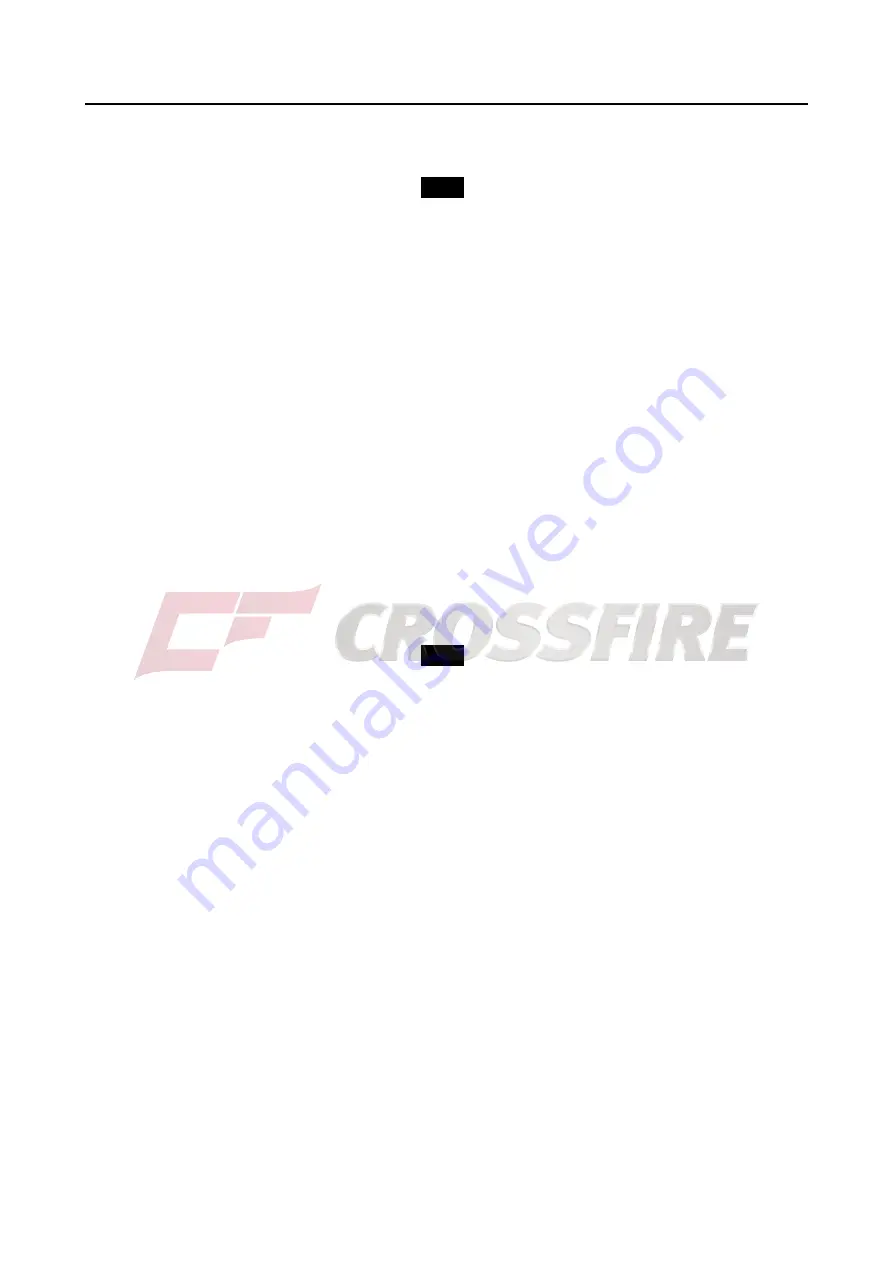
GENERAL INFORMATION
- 38 -
not spin freely. Check for the following conditions:
a. Dragging brakes. Check for this condition immediately after riding the UTV
NOTE
After riding the UTV. Come to a stop on a level
surface. Turn the engine off and shift the
transmission into neutral. Walk or push the UTV
forward. If the UTV is harder to push than normal.
Check for dragging brakes
b. Damaged or binding drive system
c. Damaged drive system and gear bearing
2. Test ride the UTV and accelerate quickly from first to second gear. If the engine speed in-creased
according to throttle position. Perform Step 3. If the engine speed did not increase. Check CVT
a. Warped clutch plates/discs
b. CVT spring
3. Test rides the UTV and accelerate lightly. If the engine speed increased according to throttle position.
Perform Step 4. If the engine speed did not increase. Check for one or more of the following
problems:
a. Clogged air filter
b. Restricted fuel flow
c. Pinched fuel tank breather hose (Figure 9).
d. Clogged or damaged silencer or muffler
NOTE
A clogged exhaust system will prevent some of the
burned exhaust gasses from exiting the exhaust
port at the end of the exhaust stroke. This condition
effects the incoming air/fuel mixture on the intake
stroke and reduces engine power
4. Check for retarded ignition timing. A decrease in power results when the plugs fire later than normal
5. Check for one or more of the following problems
a. Low
engine
compression
b. Worn spark plug
c.
Fouled spark plug
d. Incorrect spark plug heat range
e. Weak ignition coil
f.
Incorrect ignition timing
g. Plugged throttle passages
h. Incorrect oil level (too high or too low)
i. Contaminated
oil
j.
Worn or damaged valve train assembly
k. Engine
overheating
6. If the engine knocks when it is accelerated or when running at high speed. Check for one or more of
the following possible malfunctions:
a. Incorrect type of fuel

